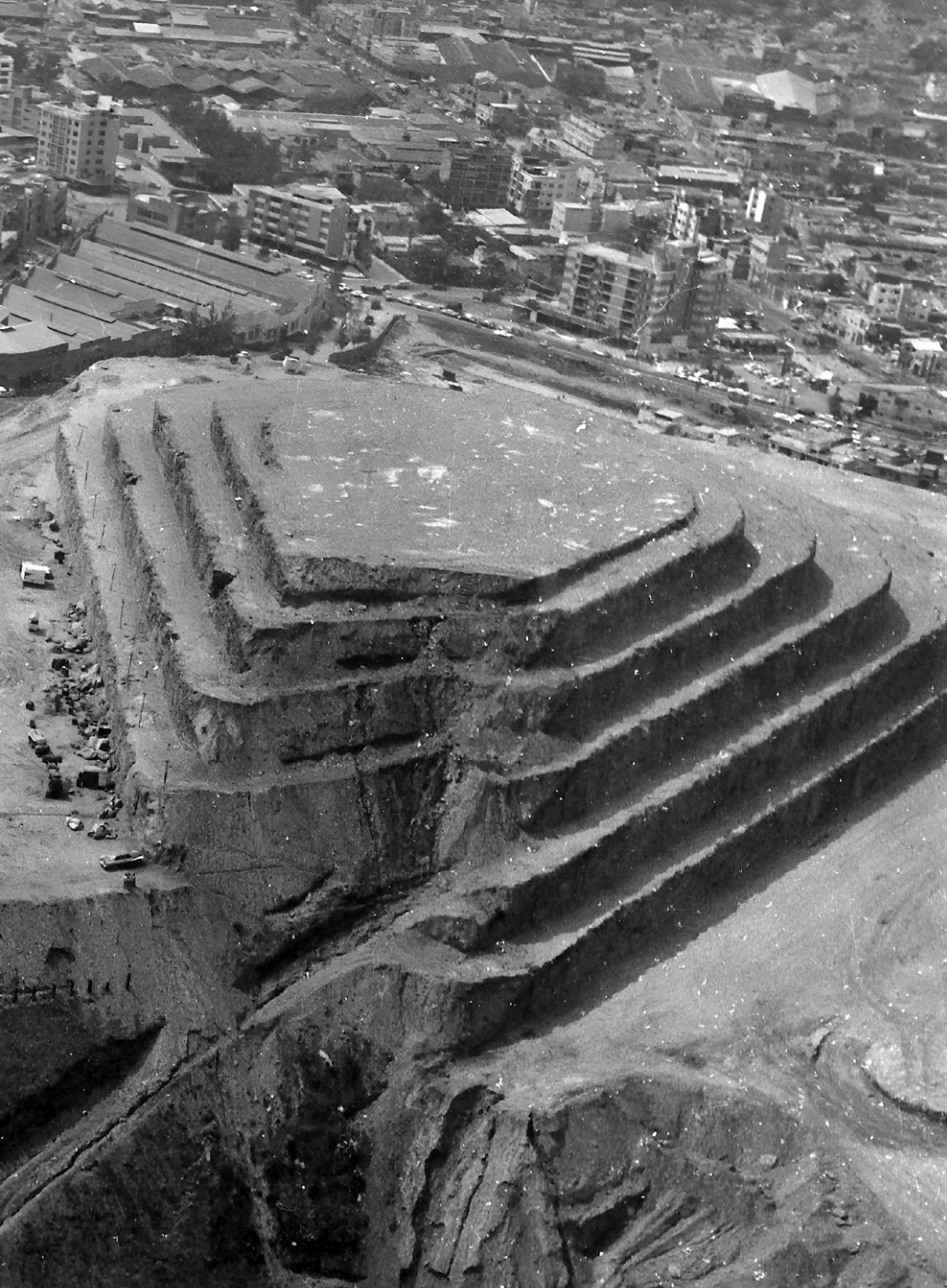De príncipe a mendigo: la triste historia del helicoide de la Roca Tarpeya
Barra lateral del artículo

Palabras clave:
Contenido principal del artículo
Resumen
El boom petrolero de Venezuela a mediados del siglo XX produjo una modernización arquitectónica en el país, sobre todo en Caracas. Uno de los proyectos más sobresalientes por su diseño e historia fue el “Helicoide de la Roca Tarpeya: Centro Cultural y Exposición de Industrias” (1956-1961). Ubicado al centro-sur de la capital, este antecedente de los malls generó gran admiración internacional por esculpir con dinamita el cerro llamado la Roca Tarpeya en forma helicoidal para luego cubrirlo de hormigón armado y realizar la conjunción de comercio y autopista en una estructura rodeada por cuatro kilómetros de rampas vehiculares. Por razones políticas, el Helicoide no pudo ser completado. Varios proyectos estatales, tanto comerciales como culturales, fueron intentados y frenados por la alternancia entre los dos partidos políticos dominantes. Sus dos usos más relevantes han sido “La gran ocupación” (1979-1982), cuando 500 familias de escasos recursos fueron ubicadas allí debido a lluvias torrenciales; y la instalación de las agencias policiales de inteligencia desde 1985 hasta la actualidad. La acción de estas últimas lo ha convertido en cárcel y centro de torturas, sobre todo a partir del ascenso de Nicolás Maduro al poder en 2013, gobierno conocido por la violación sistemática de los derechos humanos. La decadencia del Helicoide representa el fracaso de la modernidad y la democracia en Venezuela.
Detalles del artículo

Esta obra está bajo una licencia internacional Creative Commons Atribución-NoComercial 4.0.
Materia Arquitectura proporciona acceso inmediato y gratuito a todos los contenidos de esta edición electrónica, publicada simultáneamente con la edición impresa. Materia Arquitectura no cobra honorarios a los autores por ningún concepto.
Todos los contenidos de esta edición electrónica se distribuyen bajo licencia Creative Commons de “Atribución-Copartirigual 4.0 Internacional” (CC-BY-SA).
La licencia Creative Commons permite el acceso libre e inmediato al contenido y permite que cualquier usuario lea, descargue, copie, distribuya, imprima, busque o genere enlaces a los textos completos de los artículos, permitiendo también que estos puedan ser rastreados para indexarlos, pasarlos como datos a software o usarlos para cualquier otro propósito legal. Asimismo, la licencia otorga derechos de uso a quienes a su vez utilicen una licencia abierta (Creative Commons o equivalente).
Los derechos de los textos y las imágenes publicadas pertenecen a sus autores, quienes otorgan a Materia Arquitectura la licencia para su uso. La gestión de los permisos y la autorización de publicación de las imágenes (o de cualquier material) que contenga derechos de autor y sus consecuentes derechos de reproducción en esta publicación es de exclusiva responsabilidad de los autores de los artículos.
Toda vez que mencionen su origen, los autores son libres de distribuir sus artículos por otros medios. Cualquier reproducción total o parcial del material deberá citar su procedencia.